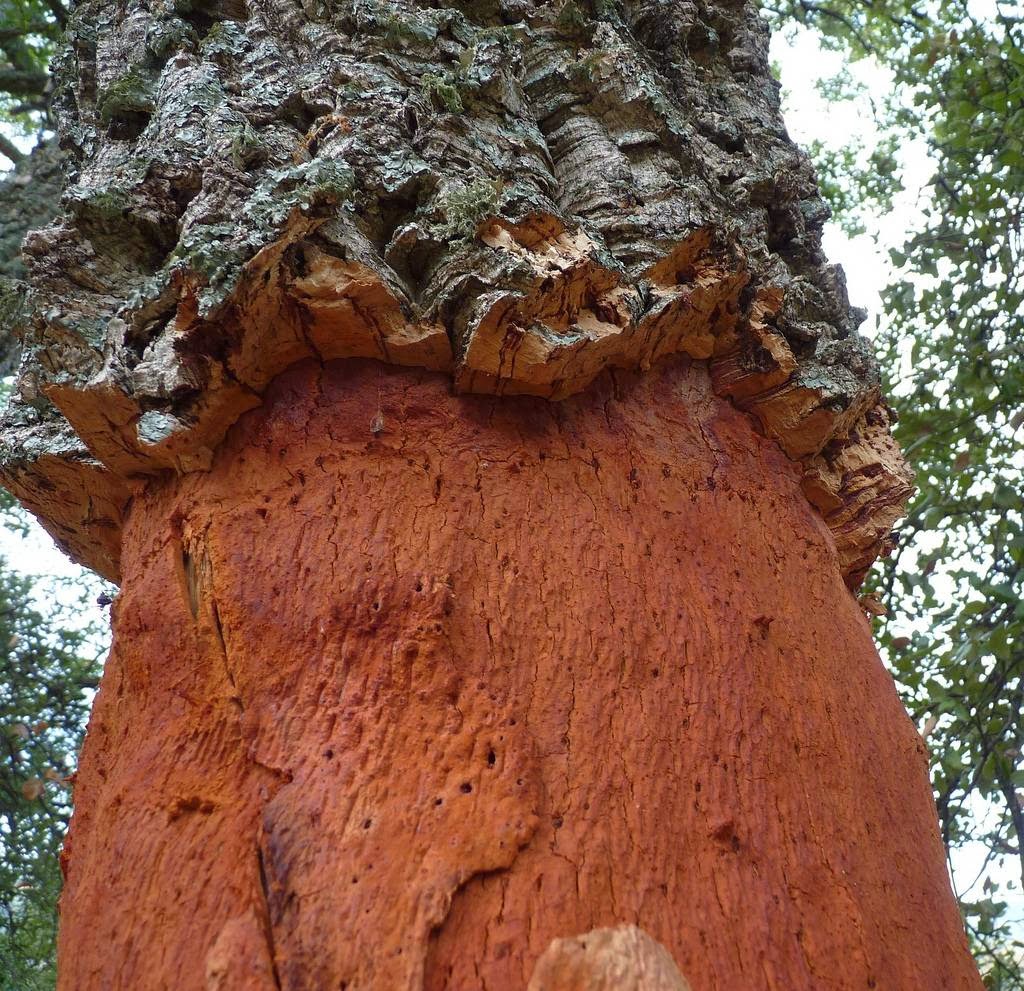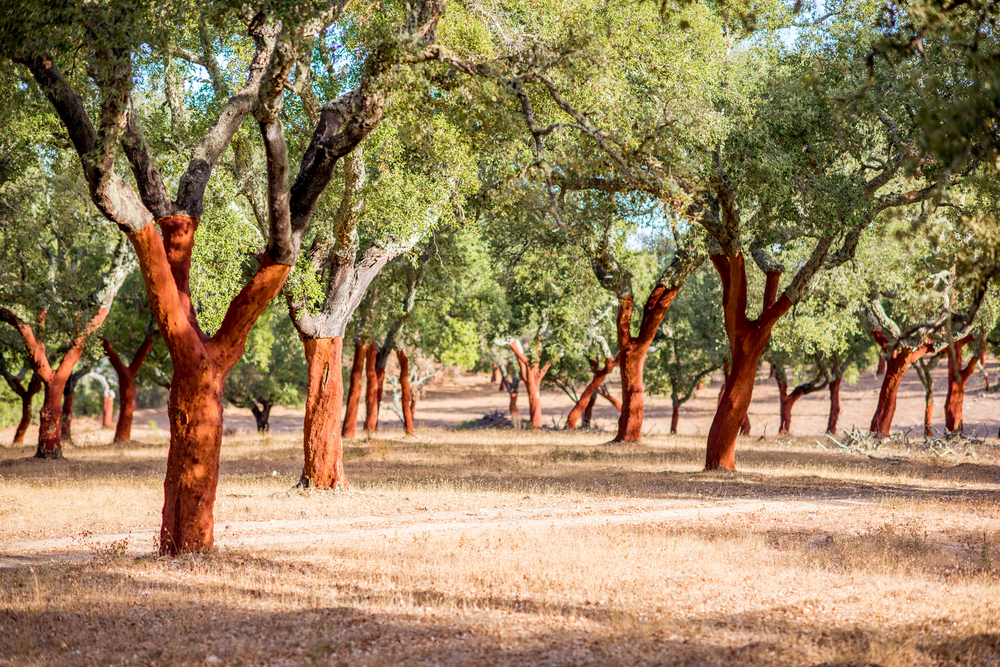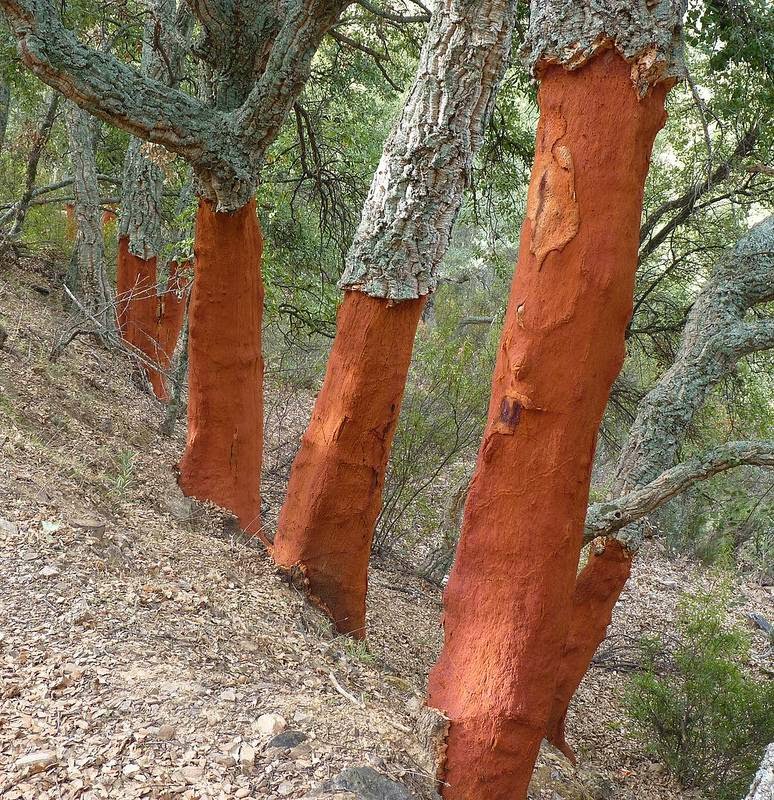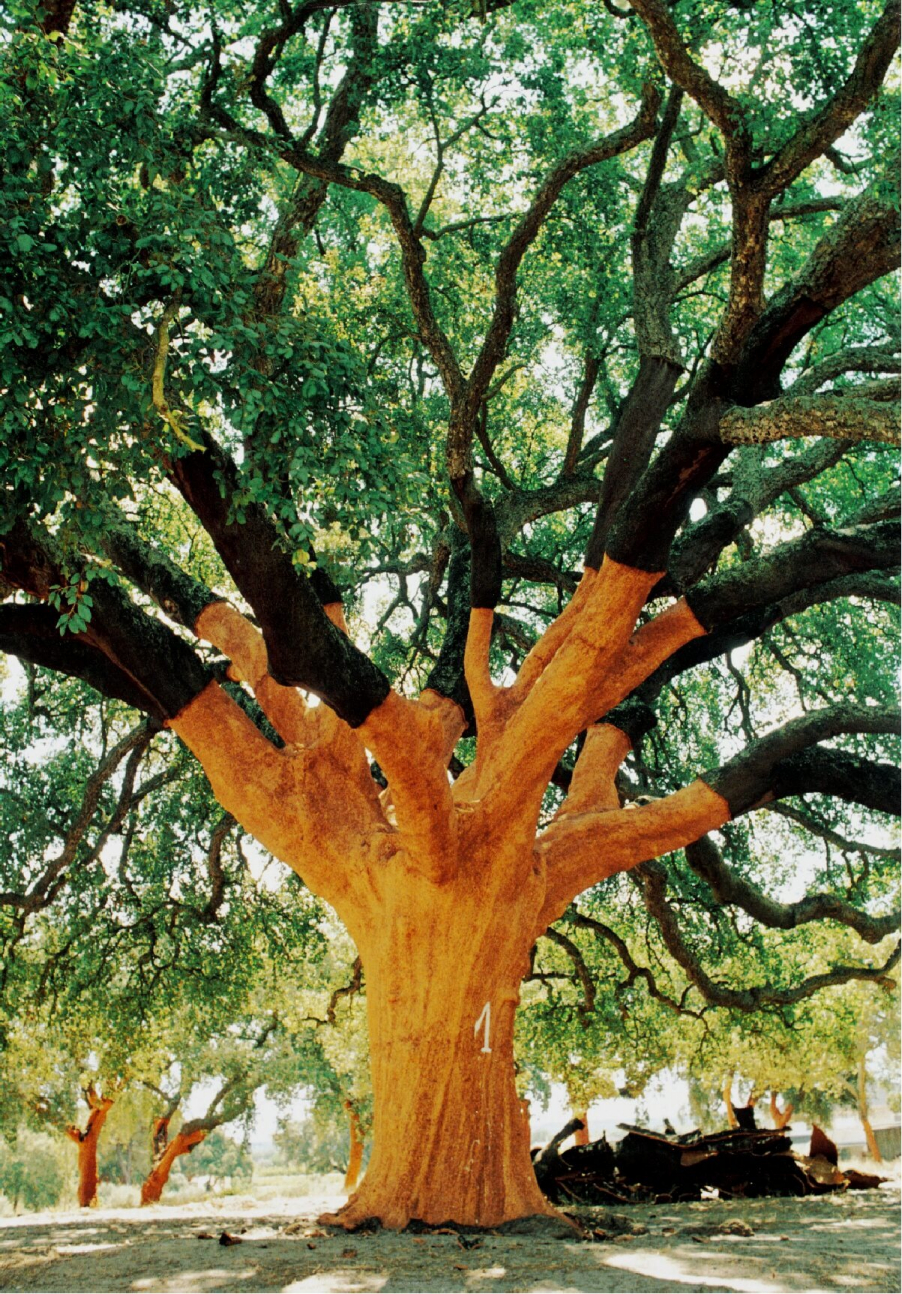
Cork Harvest for the Patient Farmer Kuriositas
The cork oak, or Quercus suber, is a fascinating tree species that primarily grows in the Mediterranean region. Its unique bark is the source of the world's cork supply, a material that is used in a multitude of applications, from wine stoppers to insulation.

Wine Corks or Screw There's Still no Closure » Cellar Tours
Quercus suber, commonly called the cork oak, is a medium-sized, evergreen oak tree in the section Quercus sect. Cerris. It is the primary source of cork for wine bottle stoppers and other uses, such as cork flooring and as the cores of cricket balls. It is native to southwest Europe and northwest Africa.

corktree001 Area Floors
Cork Oak is a medium to large size attractive broadleaf evergreen shade tree that grows 70 to 100 feet tall and equally as wide. It has a short trunk, thick branches, and a rounded crown. Corky bark covers the trunk and major limbs of the tree. The spongy bark of mature trees is used to make wine bottle corks, cork flooring, and other items.

Every nine years, a cork tree is stripped of its spongy pliable bark
Lawn & Garden Trees, Shrubs & Vines Where does cork come from? Cork is gotten from the cork oak tree, which primarily grows along the coast of the Mediterranean sea. Brycia James / Getty Images

SM1'S BLOG 4 U Cork Harvest for the Patient Farmer...
Cork is the outer bark of an evergreen oak of the genus and species Quercus Suber (oak cork). Forests of oak cork trees are carefully monitored and cultivated, and act as a renewable source for this remarkable material. A cork tree regenerates its precious outer layer 12 or 13 times during its 150-year lifetime.

301 Moved Permanently
Cork is not a consistent feature on a specific species of tree; it can appear on some trees and not on others. Additionally, cork shape appears differently on different types of trees. On oak trees, it can appear as a continuous layer, while on elm and sweet gum trees, the cork forms sharp protrusions.

Cork Oak Medium Tree Seedling
The cork tree's bark is a thick spongy hide that is stripped stripped away by workers using knives and axes once every nine years—the normal time it takes for the tree to recover. A number is.

Cork Oak Trees The Only Trees In The World That Produce Cork Mast
The Biggest Cork Tree. Near the Portuguese town of Águas de Moura the Sobreiro Monumental (Monumental Cork Oak) is located, a tree of 234 years old, 16 metres (52 ft) tall and with a trunk that requires at least five people to embrace it. It has been considered a National Monument since 1988, and the Guinness Book of Records states it as the.

Are Cork Trees Endangered? Bent & Bree
The Whistler Tree, located in Portugal's Alentejo region is the world's largest, oldest cork tree! If you're wondering how bark turns into the typical cork with which you're familiar we.

Cork Trees and Coast SelfGuided Portugal Bike Tours
The trees live for about 300 years. The cork industry is generally regarded as environmentally friendly. [8] Cork production is generally considered sustainable because the cork tree is not cut down to obtain cork; only the bark is stripped to harvest the cork. [9]

Cork closures in wine bottles how they reduce the carbon footprint of wine
The Cork Oak is favored by many U.S. horticulturists as a hearty, evergreen shade tree. Mature trees can reach 75' tall and form a broad canopy of toothed, shiny dark green leaves that are silver-gray beneath. Chocolate brown acorns are held loosely in caps and provide food for bird and small animals.The Cork Oak can b.

Ultimate Cork Flooring Buying Guide Remodeling Cost Calculator
Cork is the bark of the cork oak, Quercus suber, which grows in Mediterranean climates. Pliny, in his Natural History (A.D. 77), describes it: "The cork-oak is a small tree, and its acorns are bad in quality and few in number; its only useful product is its bark which is extremely thick and which, when cut, grows again."

Cork Tree Stock Photo RoyaltyFree FreeImages
Phellodendron amurense Rupr. Phellodendron chinense C.K.Schneid. Phellodendron, or cork-tree, is a genus of deciduous, dioecious trees in the family Rutaceae, native to east and northeast Asia. It has leathery, pinnate leaves and yellow, clumped flowers. The name refers to the thick and corky bark of some (but not all) species in the genus.

corktree A Permaculture Design Course Handbook
Cork oak trees (Quercus suber) are native to the Mediterranean region, and are the only trees in the world that produce cork. Cork is a versatile material that has been used for centuries for a variety of purposes, including wine stoppers, insulation, and flooring. The cork oak tree is an evergreen, and can live to be over 200 years old.

Cork tree
The cork oak tree belongs to the same family as beech and chestnut trees, the Fagaceae family. The oak ( Quercus ) genus counts over 500 known species — but while all oaks are beautiful in their own right, there is no doubt that the cork oak tree is one of the most interesting ones.

The World's Largest Cork Tree 100 Cork Produced by Nature
cork tree, (genus Phellodendron ), genus of several eastern Asian trees in the rue family ( Rutaceae) usually having corklike bark. The Amur, or Japanese, cork tree ( Phellodendron amurense) is useful as a lawn and shade tree and is tolerant of a wide range of growing conditions.